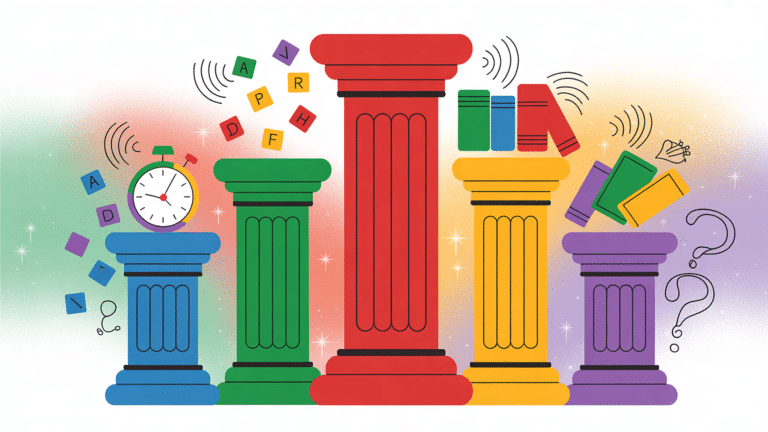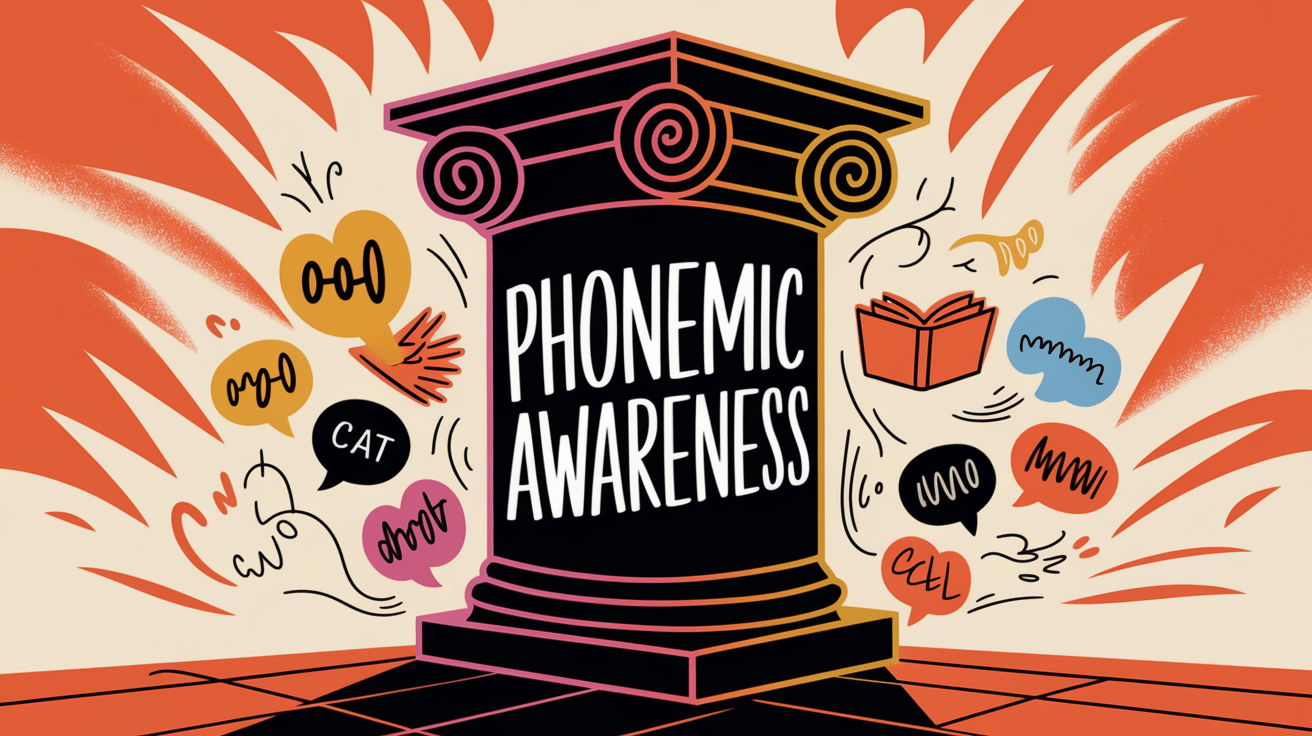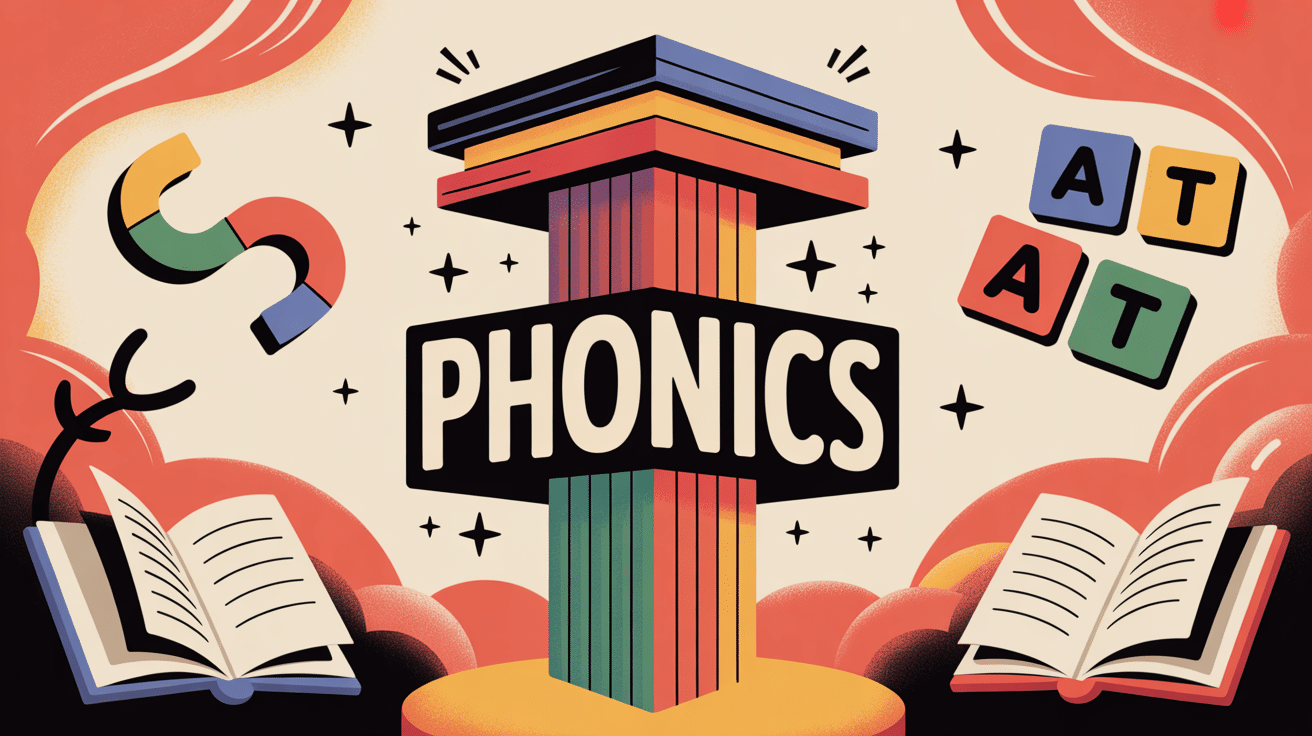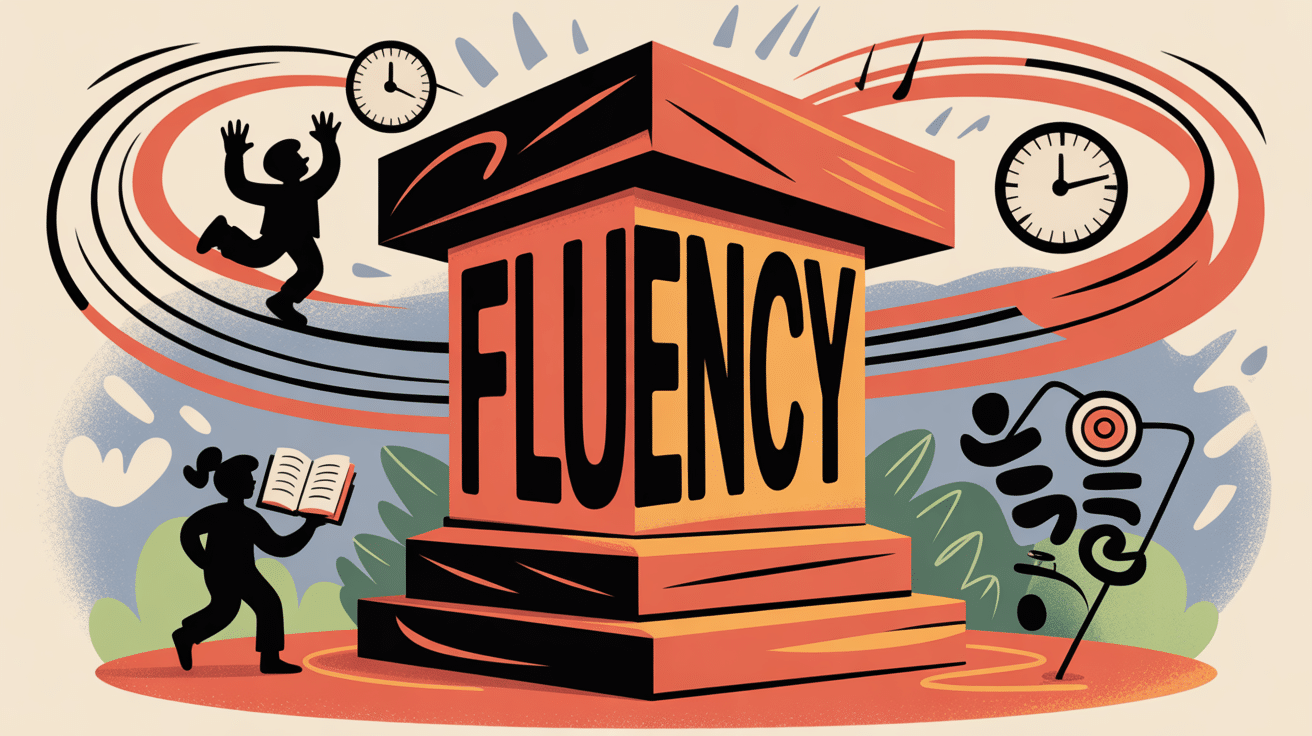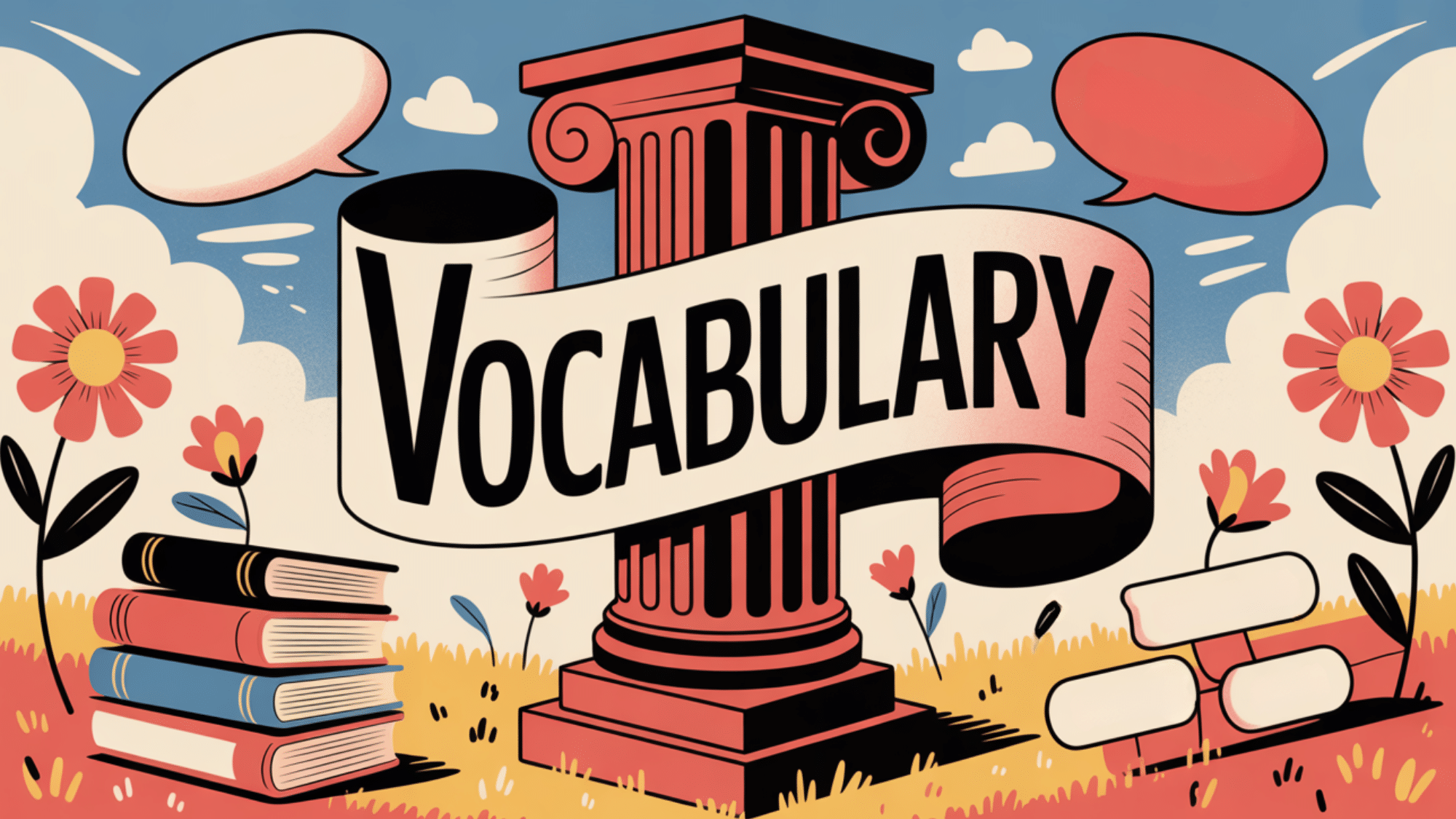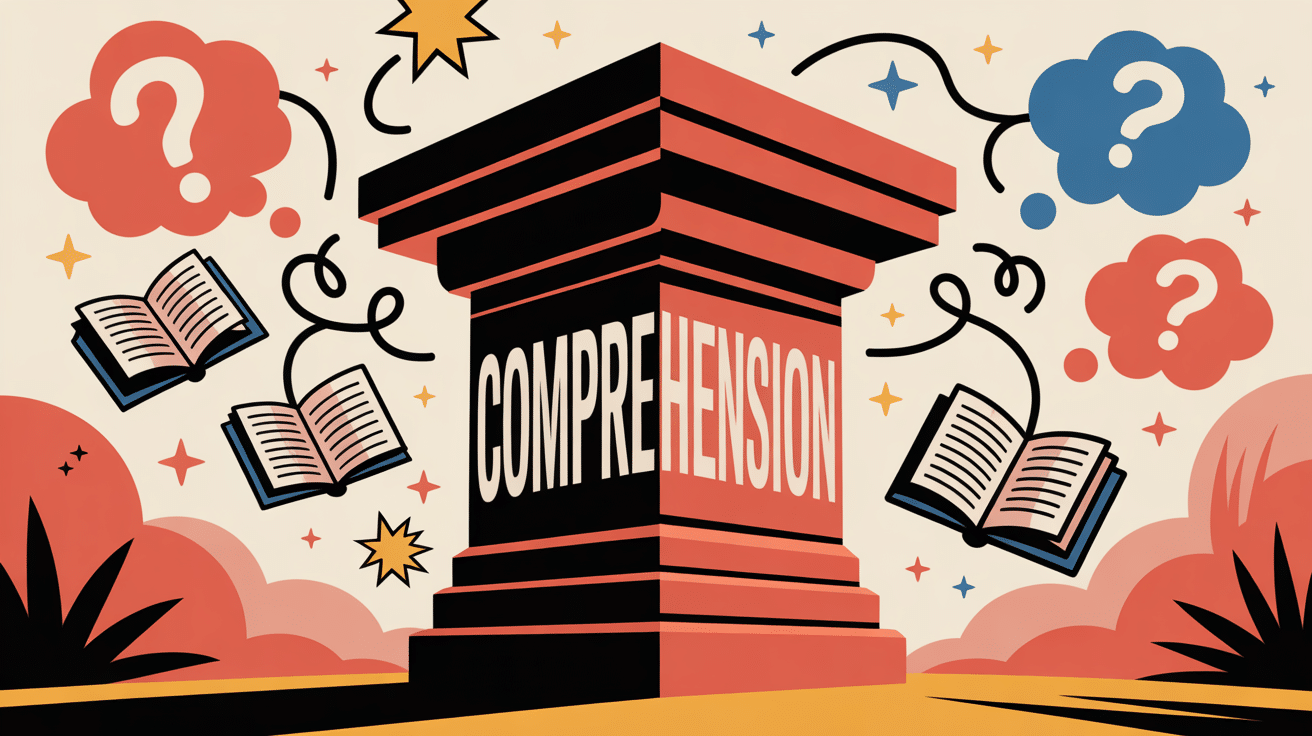Why do some children learn to read effortlessly while others struggle for years?
Reading instruction feels overwhelming when you’re juggling multiple approaches without clear direction. Many teachers and parents struggle to create effective literacy programs that build strong readers from the ground up.
This comprehensive guide will show you exactly how to use the five essential pillars of reading to create a solid foundation for literacy success.
You’ll get practical strategies, free resources, and step-by-step methods that work for learners at every level.
In this post, you’ll learn about each pillar, from phonemic awareness to comprehension, along with specific teaching techniques, classroom activities, and downloadable materials.
What Are the Pillars of Reading?
The five pillars of reading form the foundation of effective literacy instruction. These research-backed components work together to help students become confident and skilled readers who can understand and enjoy written texts.
The Five Essential Pillars:
- Phonemic Awareness – The ability to hear, identify, and work with individual sounds in spoken words. This skill helps children understand that words are made up of smaller sound units.
- Phonics – The connection between letters and their corresponding sounds. Students learn how to decode written words by matching letters to sounds they already know.
- Fluency – Reading with appropriate speed, accuracy, and expression. Fluent readers can focus on understanding meaning rather than struggling to identify individual words.
- Vocabulary – The collection of words a reader knows and understands. A rich vocabulary has a direct impact on reading comprehension and communication skills.
- Comprehension – The ability to understand, analyze, and interpret written text. This represents the ultimate goal of all reading instruction.
Each pillar builds on the others, creating a strong framework for literacy. When teachers systematically address all five areas, students develop the complete skills needed for reading success across subjects and grades.
Pillar 1: Phonemic Awareness
Phonemic awareness is the ability to hear, identify, and manipulate individual sounds (phonemes) in spoken words. This foundational skill occurs entirely through listening and speaking; no letters or written text are involved yet.
Why It’s Critical: Students who master phonemic awareness early become stronger readers and spellers later. This skill teaches children that words break apart into smaller sound units, preparing them to understand how letters represent those sounds.
Research indicates that phonemic awareness is one of the most reliable predictors of reading success in elementary school.
How to Teach It:
- Start with simple sound activities during circle time or transition moments
- Have students clap syllables in their names and play rhyming games with familiar songs
- Practice blending sounds to make words (/c/ /a/ /t/ = cat)
- Use picture cards for sound sorting activities – group items that start with the same sound
- Try “I Spy” sound games: “I spy something that starts with /b/”
- Practice sound substitution: “What word do we get if we change the /c/ in ‘cat’ to /h/?”
Free Resource:This infographic provides a clear visual breakdown of phonemic awareness skills, including blending, segmenting, and phoneme isolation.It’s ideal for educators seeking a concise overview to share with students or parents.
Pillar 2: Phonics
Phonics teaches the relationship between letters (graphemes) and their corresponding sounds (phonemes). Students learn to decode written words by connecting the letters they see to the sounds they already know from phonemic awareness practice.
Why It’s Critical: Phonics gives students the tools to read new words independently. Instead of memorizing every single word, children can sound out unfamiliar text using letter-sound patterns.
This skill builds reading confidence, allowing students to tackle increasingly complex texts as they progress through school.
How to Teach It:
- Begin with single letter sounds using multisensory approaches – say the sound, trace the letter, find objects that start with that sound
- Introduce letter combinations gradually, starting with common patterns like “sh,” “ch,” and “the”
- Use decodable books that feature the specific phonics patterns you’ve taught
- Create word families on chart paper (-at family: cat, bat, hat, rat)
- Practice blending activities where students combine individual letter sounds to read whole words.
- Make it hands-on with magnetic letters, letter tiles, or phonics games
Free Resource: Get a printable phonics flashcard set featuring the most common letter-sound combinations, plus fun games to practice decoding skills at home or in the classroom.
Pillar 3: Fluency
Fluency is the ability to read text accurately, quickly, and with proper expression. Fluent readers don’t struggle with individual words.
They read smoothly and naturally, which allows them to focus on understanding the meaning of what they’re reading.
Why It’s Critical: Fluent reading enables students to focus on comprehension rather than decoding, making reading a natural and engaging experience. Poor fluency causes comprehension issues because students struggle with word recognition.
How to Teach It:
- Use repeated reading exercises – have students read the same passage multiple times until it becomes smooth
- Model fluent reading by reading aloud with expression and appropriate pacing
- Practice with poetry, songs, and chants that have natural rhythm and flow
- Time students occasionally to track reading speed improvements (but don’t make it stressful)
- Record students reading so they can hear their own progress over time • Pair students for partner reading where they take turns and support each other
Free Resource: Access a fluency-building activity guide with timed reading passages, expression exercises, and progress tracking charts for different reading levels.
Pillar 4: Vocabulary
Vocabulary encompasses all the words a student knows and understands, both in listening and reading.
It includes knowing word meanings, understanding how words relate to each other, and being able to use words correctly in different contexts.
Why It’s Critical: A strong vocabulary improves reading comprehension, as students must understand words to fully grasp the text. It also improves writing and speaking skills, enabling clearer, more precise expression across subjects.
How to Teach It:
- Read aloud daily and discuss interesting words you encounter in stories
- Create word walls organized by themes, subjects, or word families
- Teach word parts like prefixes, suffixes, and root words to help students figure out new vocabulary
- Use graphic organizers to show how words connect and relate to each other
- Encourage students to use new vocabulary in their own speaking and writing
- Play word games like vocabulary bingo, word association, or synonym/antonym matching
Free Resource: Download a grade-level vocabulary list with definitions, example sentences, and fun activities to build word knowledge systematically.
Pillar 5: Comprehension
Reading comprehension is the ability to understand, interpret, and analyze written text.
It involves connecting new information to prior knowledge, making inferences, and thinking critically about what you read.
Why It’s Critical: Comprehension is the goal of reading instruction, supported by other pillars, enabling students to understand and learn from text. Strong skills ensure success across subjects and promote lifelong learning.
How to Teach It:
- Teach students to ask questions before, during, and after reading
- Show students how to make connections between the text and their own experiences
- Practice summarizing main ideas and identifying supporting details
- Use graphic organizers to help students organize their thinking about texts
- Encourage students to visualize what they’re reading and make mental pictures
- Discuss books and articles regularly, asking open-ended questions about meaning
Free Resource: Get a comprehension strategy toolkit with question stems, graphic organizers, and reading response activities that work with any text.
Free Resources to Support the Pillars of Reading
Get everything you need to implement effective reading instruction without breaking your budget.
| Resource Type | What’s Available | Best For |
|---|---|---|
| Downloadable Materials | Phonemic awareness activity cards, phonics flashcards, fluency tracking sheets, vocabulary worksheets, comprehension graphic organizers | Classroom instruction, homework, and small group work |
| Online Platforms | Starfall (phonics games), Reading A-Z (leveled books), Epic Books (digital library), ABCmouse (skill practice) | Interactive learning, independent practice, and digital lessons |
| School Programs | Fountas & Pinnell, Wilson Reading System, district literacy resources, professional development materials | Comprehensive curriculum support, structured lessons |
| Library Resources | Teacher resource sections, professional books, activity guides, and educational materials for borrowing | Professional development, lesson planning, and additional activities |
Access Information: All downloadable resources are organized by pillar and grade level on our dedicated resource page. Simply click the pillar you need, select your grade level, and download the materials instantly.
Getting Started: Begin with our starter pack, which includes one resource from each pillar. Then, expand your collection based on your students’ specific needs and your teaching style.
How to Integrate All 5 Pillars in Your Reading Instruction
The magic happens when all five pillars work together. Here’s how to blend them into lessons that build complete readers.
Create a Balanced Daily Routine
Effective reading instruction integrates all pillars throughout the day. Begin each session with a phonemic awareness warm-up, then practice phonics with decodable texts.
Focus on fluency via repeated reading, build vocabulary during read-aloud, and emphasize comprehension in every activity.
Simple Daily Structure:
- 5 minutes: Sound warm-up games
- 15 minutes: Letter-sound practice with decodable texts
- 10 minutes: Fluency practice through repeated reading
- 20 minutes: Read aloud focusing on vocabulary and comprehension
- 10 minutes: Independent reading, applying all skills
Key Success Strategies
Utilize real books in conjunction with skill-building activities. Adjust instruction based on student needs. Some students require additional phonics help, while others need comprehension support. Assess through quick observations rather than formal tests.
Pro Tip: Keep a simple weekly checklist to ensure you’re covering all five pillars, but don’t worry if some days emphasize certain areas more than others.
Conclusion
The five pillars of reading, phonemic awareness, phonics, fluency, vocabulary, and comprehension, work together to create confident, skilled readers.
Addressing each systematically helps students develop the skills needed for reading success across subjects and grade levels.
Start using these strategies today. Download free resources from the guide. Add one new pillar activity weekly, then gradually include all five areas. Small steps improve students’ reading growth.
What’s working in your classroom? Drop a comment below and share which pillar strategy your students love most.

